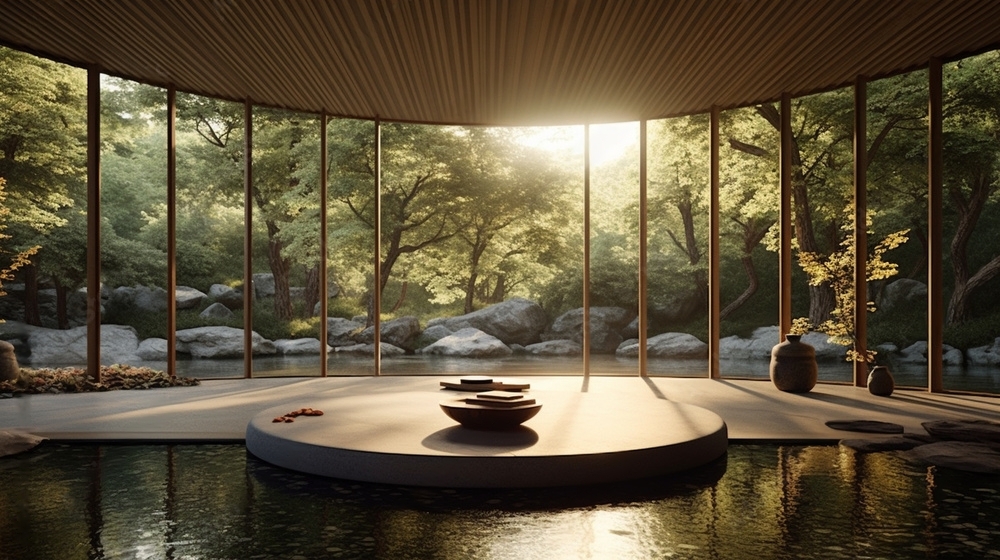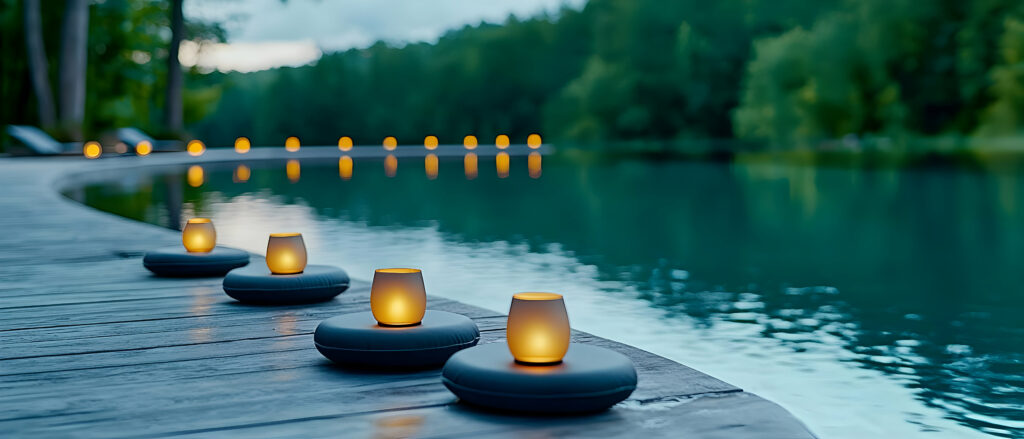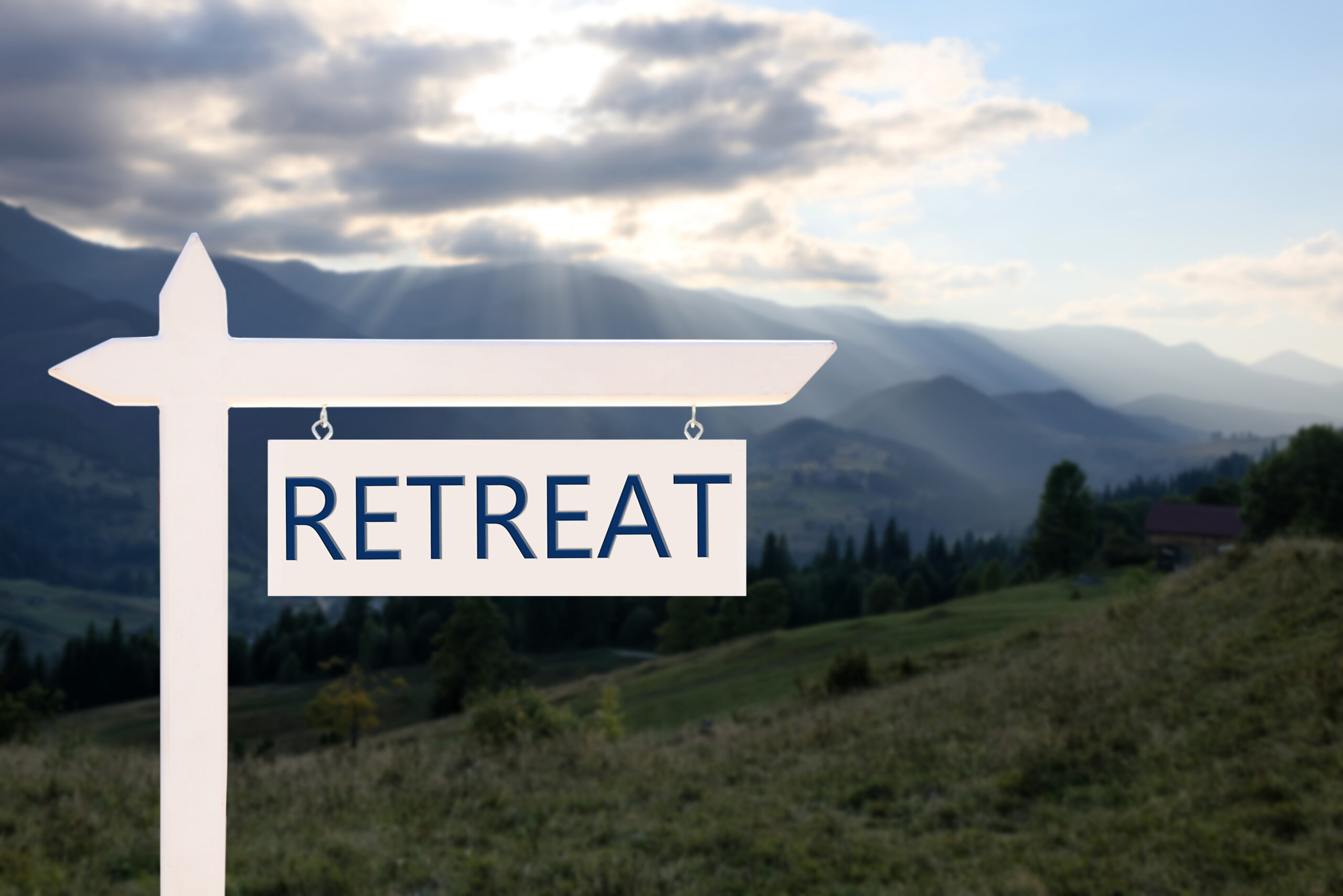Embrace the Power of Distance for Personal Transformation
Escape to Nature and Recharge Your Senses
I’ve always believed in a holistic approach to health, valuing both the body and the mind. Through my own experiences with wellness retreats, I’ve come to understand the profound impact they can have on our lives.
Stepping away from the daily rush to immerse oneself in a space devoted to personal growth has been transformative for me, and I’ve seen similar effects in others. But with so many retreat options available, finding the one that truly aligns with your goals can be challenging.
This guide is meant to make that process easier, helping you navigate the vast array of choices and find a retreat that supports your unique journey to wellness.
"The journey of a thousand miles begins with one step."
– Lao Tzu
Choosing the right retreat is that first step—a step toward renewed energy, inner peace, and meaningful growth.

1. Clarify Your Wellness Goals
Know What You Want from Your Retreat Experience
Studies shoSelf-assessment on what outcome is necessary for me in my current life season is one of the biggest navigators in choosing the right retreat.
Key Considerations When Defining Your Wellness Goals
- Relaxation and Stress Relief: If your goal is to unwind and de-stress, look for retreats that emphasize relaxation techniques like meditation, gentle yoga, and nature immersion.
- Spiritual Growth: For those seeking spiritual exploration, retreats focusing on mindfulness, meditation, and self-reflection may be ideal.
- Fitness and Physical Health: If fitness is your priority, look for retreats that offer active programs like yoga, hiking, and fitness classes.
- Detox and Cleanse: Detox-focused retreats with meal planning, cleansing protocols, and wellness therapies can support your goal of rejuvenating your body.
- Mindfulness and Personal Development: For a more holistic approach, retreats offering workshops on self-awareness, emotional health, and mindful living are excellent options.
By taking the time to define your wellness goals, you set a clear intention for your retreat experience, ensuring it aligns with what matters most to you. Knowing what you want from the retreat will make it easier to choose the right program and maximize the personal benefits, whether your goal is relaxation, spiritual growth, fitness, or self-discovery.

2. Consider the Type of Retreat
Choose the Right Retreat Style for Your Wellness Needs
I personally like to explore new wellness activities; however, if you have specific preferences, these key points can serve as a guiding star.
Types of Retreats to Consider
- Yoga Retreat: Centered on daily yoga practice, these retreats enhance flexibility, reduce stress, and improve physical and mental wellness.
- Meditation Retreat: Designed for mindfulness and mental clarity, meditation retreats offer guided sessions to help you focus, relax, and reflect.
- Detox Retreat: Ideal for physical cleansing, detox retreats often include specialized diets, cleanses, and wellness treatments to rejuvenate the body.
- Spiritual Retreat: These retreats encourage self-reflection and personal growth, providing space for spiritual connection and emotional healing.
- Adventure Retreat: Perfect for those seeking an active experience, adventure retreats often combine outdoor activities with wellness practices.
Choosing the right type of retreat is key to making the most of your wellness journey. By understanding what each type offers—from yoga and meditation to detox, spiritual, and adventure retreats—you can select one that aligns with your current wellness goals and supports the transformative experience you’re seeking.

3. Choose a Location That Resonates with You
Find a Setting That Supports Your Wellness Goals
For me, the environment is a game-changer, as the right location can profoundly support my inner peace and growth.
Popular Retreat Settings and Their Benefits
- Beach or Coastal Retreats: The sound and rhythm of the ocean help relieve stress, encourage relaxation, and improve sleep.
- Mountain Retreats: Mountainous settings bring a sense of grounding and strength, ideal for self-reflection and inner peace.
- Forest or Nature Retreats: Being surrounded by trees and greenery can have powerful calming effects and is ideal for reconnecting with nature.
- Desert Retreats: These retreats offer solitude and a unique, meditative environment, perfect for deep reflection and spiritual growth.
- Urban or Cultural Retreats: For those who thrive in vibrant settings, an urban retreat offers wellness experiences within city environments, often with a cultural element.
Selecting a retreat location that resonates with you enhances your journey and the effectiveness of your experience. Whether it’s the tranquility of the beach, the grounding energy of mountains, or the healing silence of the forest, finding the right setting will allow you to fully embrace your retreat and maximize its benefits for mind, body, and spirit.
4. Assess the Retreat Length and Schedule
Choose a Time Commitment That Matches Your Lifestyle and Goals
We all lead busy lives, and I understand how challenging it can be to carve out time for self-care. That’s why it's essential to choose a retreat with a length and schedule that align with your other responsibilities, so you can fully commit without added stress.
Length and Schedule Options to Consider
- Weekend Retreats: Ideal for a short reset, offering a concentrated experience for stress relief and relaxation.
- One-Week Retreats: Perfect for deeper relaxation, personal growth, and the chance to establish wellness habits.
- Two-Week or Longer Retreats: Provides a fully immersive experience, with ample time for significant transformation and habit formation.
- Flexible Schedules: Retreats with lighter schedules allow for downtime and personal reflection.
- Structured Schedules: For those who thrive on routine, structured programs offer a full itinerary with activities throughout the day.
By taking the time to define your wellness goals, you set a clear intention for your retreat experience, ensuring it aligns with what matters most to you. Choosing the right retreat length and schedule ensures you can commit fully to the experience and reap its full benefits. Whether you need a quick weekend getaway or a longer, immersive journey, selecting a retreat that aligns with your time availability and personal rhythm will enhance your overall wellness experience.
5. Evaluate the Facilitators and Instructors
Seek Out Skilled Guides Who Align with Your Goals
High-quality facilitators with extensive experience are crucial when selecting a retreat—they can make or break the experience. In fact, sometimes the expertise and presence of skilled guides are the most important factor for me.
What to Look for in Retreat Leaders:
- Qualifications and Experience: Research the backgrounds of the facilitators and instructors. Look for certifications or expertise in areas like yoga, meditation, nutrition, or other wellness disciplines relevant to the retreat focus.
- Teaching Style: Everyone learns differently, so finding a retreat with instructors who use teaching methods that resonate with you—whether they’re calm and supportive or more structured and goal-oriented—can enhance your experience.
- Personal Values: A facilitator’s approach to wellness can greatly influence your experience. Look for guides who share values similar to yours, as this can help create a supportive environment aligned with your intentions.
Having knowledgeable and compassionate leaders can make a significant difference in your retreat experience. Skilled facilitators can offer valuable insights, create a safe and nurturing space, and guide you effectively on your wellness journey. Taking the time to evaluate retreat leaders ensures you’ll have mentors who genuinely support your goals and growth.
6. Review the Daily Activities and Program Structure
Choose a Program That Supports Your Wellness Objectives
Personally, I value a balance between structure and free time, allowing for both guidance and personal reflection.
Key Aspects to Consider in Retreat Activities:
- Balanced Itinerary: A good retreat offers a balanced mix of activities and downtime. Look for programs that incorporate both structured sessions (like yoga classes, workshops, or guided meditations) and free time for personal reflection or relaxation.
- Activity Types: Ensure the activities align with your wellness goals. If you’re seeking relaxation, a retreat with spa treatments, gentle yoga, and mindfulness exercises may be ideal. For physical wellness, look for programs that include fitness classes, hiking, or other active pursuits.
- Optional Add-ons: Many retreats offer optional activities like massage therapy, wellness coaching, or creative workshops. Check to see if these are available to enhance your experience.
Understanding the structure and variety of activities allows you to choose a retreat that aligns with your energy level and wellness objectives. Whether you prefer a busy schedule or one that allows for more personal time, selecting a retreat with a thoughtfully crafted itinerary can help you feel both engaged and rejuvenated.
7. Consider the Group Size and Atmosphere
Find a Group Dynamic That Enhances Your Experience
Smaller groups often resonate with me as they allow for deeper connections and a more intimate experience.
Choosing the Right Group Size for Your Comfort Level:
- Intimate Retreats: Smaller groups can provide a close-knit, supportive environment, allowing for deeper connections with facilitators and other participants. This setup is ideal if you prefer a more personal, introspective experience.
- Larger Communities: If you enjoy meeting diverse individuals and having a wider range of interactions, a larger group may be a better fit. Bigger retreats often offer a variety of perspectives and opportunities for socializing, enhancing the social wellness aspect of the retreat.
The size and atmosphere of the retreat can significantly impact your comfort and experience. Consider whether you’re seeking an intimate space for personal growth or a more vibrant community for social engagement. Finding a group dynamic that aligns with your personality can enhance the retreat’s transformative potential.
8. Check for Accommodation and Amenities
Ensure Your Stay Supports Your Relaxation and Comfort
I always prioritize luxury amenities when choosing a retreat; they add a layer of comfort that elevates the entire experience. On my platform, I carefully curate venues with these high-quality offerings in mind.
What to Look for in Retreat Accommodations:
- Room Types and Privacy: Whether you prefer a private room for solitude or a shared space for socializing, choose accommodations that suit your comfort needs.
- Amenities: Wellness retreats often offer amenities like spas, pools, or fitness facilities. Assess what’s available to ensure you have everything needed for relaxation and rejuvenation.
- Meals and Nutrition: Many retreats offer health-focused meal plans to support wellness goals. Check if the food aligns with your dietary preferences or if there are customization options.
Comfortable accommodations and high-quality amenities can enhance your retreat experience, providing a nurturing environment for relaxation and well-being. From room privacy to meal offerings, selecting the right amenities can help you fully immerse in the retreat’s offerings.
9. Budget Wisely
Plan for a Retreat That Aligns with Your Financial Comfort Zone
My mission as a guide is to help you determine if the investment truly aligns with the value offered, ensuring that every dollar spent supports a meaningful experience. While staying within budget is important, it’s equally essential to choose a retreat that feels exceptional and enriching, making your time there feel genuinely special.
Tips for Budget-Friendly Retreat Planning:
- Set a Realistic Budget: Retreat costs can vary widely, so establish a budget that reflects your financial comfort while allowing for the experiences you value.
- Compare Inclusions: When evaluating options, consider what’s included in the cost, such as meals, activities, and amenities. Higher-priced retreats may include additional services, but budget-friendly options can still provide a fulfilling experience.
- Look for Discounts or Packages: Some retreats offer early-bird rates, package deals, or seasonal discounts, so explore ways to maximize your value within your budget.
Setting a clear budget can help you choose a retreat that meets both your wellness goals and financial considerations. By comparing inclusions and exploring cost-saving options, you can find a retreat that feels both enriching and affordable.
10. Read Reviews and Testimonials
Learn from Past Attendees to Set Your Expectations
Testimonial reviews and trusted sources like Zen Navigator are invaluable for making informed decisions, helping you assess the retreat's deliverable value based on real experiences.
How to Use Reviews for Insight:
- Look for Program-Specific Feedback: Pay attention to comments about the retreat’s programs, such as the quality of workshops, activities, or wellness sessions.
- Instructor and Staff Reviews: Feedback on facilitators can provide insight into their teaching style, expertise, and the support they offer.
- Atmosphere and Community Vibe: Reviews can reveal details about the retreat’s overall atmosphere and whether it aligns with your preferences for intimacy or social interaction.
Reading reviews and testimonials can offer a glimpse into the retreat experience and help you set realistic expectations. By learning from past attendees, you can gain valuable insights into the retreat’s quality, instructor support, and community vibe, helping you make a confident decision.
So here are the top 10 tips for choosing the right retreat, along with a bit of my personal insight on what I consider while evaluating a retreat for Zen Navigator. When assessing options, I look closely at the quality of facilitators, the amenities, and the overall experience offered.
It’s not just about checking boxes; it’s about ensuring that each retreat has the potential to be transformative. My goal is to help you find a retreat that aligns with your unique wellness goals, financial comfort, and desire for a space where you can truly rejuvenate and grow.
With so many choices out there, I believe a retreat should feel like a seamless match for your needs and expectations, and my role as a navigator is to make that journey easier for you.



